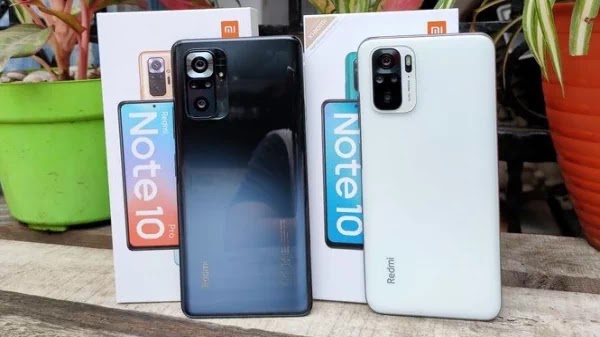In the launch event which was held online, Tuesday (30/3/2021) Country Director of Xiaomi Indonesia, Alvin Tse said that it is not easy to offer AMOLED for mobile phones with middle class prices. "(AMOLED) Much more expensive and difficult to tune.
However, we think it is time. Dedicated for 10 years, Redmi Note 10 must come with AMOLED, "said Alvin. He added, usually, AMOLED screens are owned by premium smartphone lines, including Xiaomi"s." Redmi Note Series has raised the bar for mid-range smartphones, "continued Alvin. The two newest mobile phones in the Redmi Note series carry a number of features to support user activities, such as the presence of four rear cameras and a large capacity battery.
The Xiaomi Redmi Note 10 is equipped with four rear cameras, the main camera with a 48 MP sensor. Redmi Note 10 carries an AMOLED screen with a diagonal of 6.43 inches with Full HD Plus resolution (2,400 X 1,080 pixels). The Redmi Note 10 screen is protected by Gorilla Glass 3.On the front, there is a punch hole that contains a front camera with a resolution of 13 MP (f / 2.5).
Redmi Note 10 has four rear cameras arranged vertically in a rectangular case, along with the LED Flash. The four cameras consist of a 48 MP (f / 1.8, 26mm) PDAF main camera, an 8 MP ultrawide camera (f / 2.2, 118 degrees), a 2 MP macro camera (f / 2.4), and a 2 MP (f / 2.4) depth sensor. ). Redmi Note 10 has a fingerprint sensor that doubles as a power button.
For the kitchen runway sector, Redmi Note 10 is armed with the Qualcomm Snapdragon 678 (11nm) chipset with 4GB RAM configuration and 64GB internal storage media. If less, this storage capacity can be enlarged via a MicroSD slot. This phone is equipped with the Android 11 operating system which is polished with MIUI 12.1. Redmi Note 10 is equipped with a 5,000 mAh capacity battery that supports fast charging 33W Fast Charging. In Indonesia, the Redmi Note 10 comes in three color variants, namely lake green, onyx gray, pebble white.
The Xiaomi Redmi Note 10 Pro launches powered by the Qualcomm Snapdragon 732G (8nm) System-on-Chip. Unlike the "regular" version, the Redmi Note 10 Pro has a wider screen, namely AMOLED 6.67 inches with support for a refresh rate of 120 Hz. The Redmi Note 10 Pro screen has a touch sampling rate of 240 Hz and is coated with Gorilla Glass 5 glass. On the front, there is also a punch hole. This "hole" houses a 16 MP selfie camera.
The Redmi Note 10 Pro has as many rear cameras as the standard and compact versions housed in a rectangular module. It"s just that the configuration is slightly different, which includes a 108 MP (f / 1.9, 26mm) PDAF main camera, an 8 MP ultrawide camera (f / 2.2, 118 degrees), a 5 MP macro camera (f / 2.4) AF, and a depth sensor 2. MP (f / 2.4). The difference with the "regular" version of the Redmi Note 10 also lies in the chipset used. Redmi Note 10 Pro relies on the Qualcomm Snapdragon 732G chipset with an 8nm fabrication.
The chipset is combined with two RAM and internal storage options, namely 6 GB / 64 GB and 8 GB / 128 GB. The battery has a capacity of 5020 mAh and is supported by the 33 Watt Fast Charging feature. There are three color variants of the Redmi Note 10 Pro to choose from, namely onyx gray, glacier blue, gradient bronze. Redmi Note 10 Pro comes in three different colors, namely onyx gray, glacier blue, gradient bronze (YouTube / Xiaomi Indonesia) Redmi Note 10 and Note 10 Pro are both equipped with a number of features including a fingerprint sensor that doubles as a power button, AI Face Unlock. , IR blaster module, Dual nano-SIM, USB Type-C, 3.5mm audio jack
